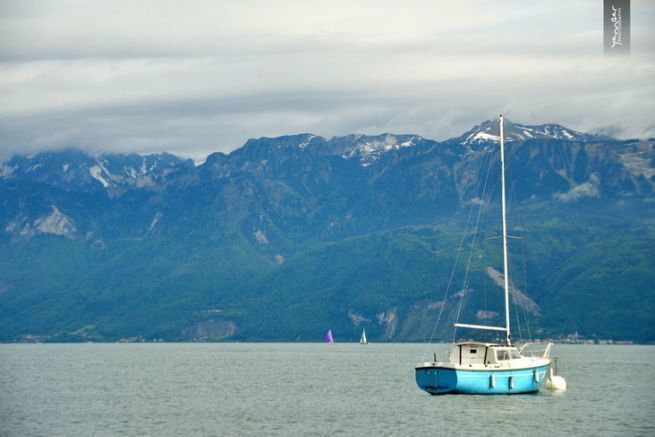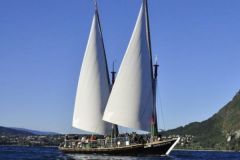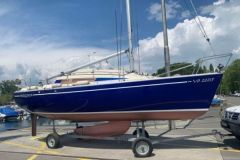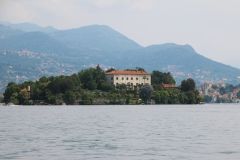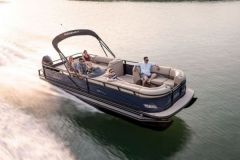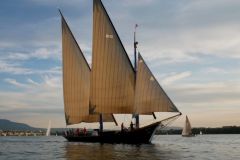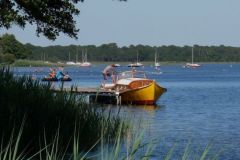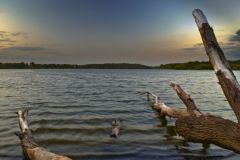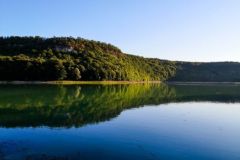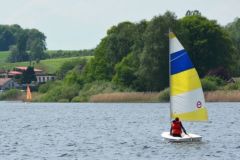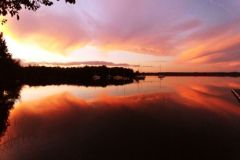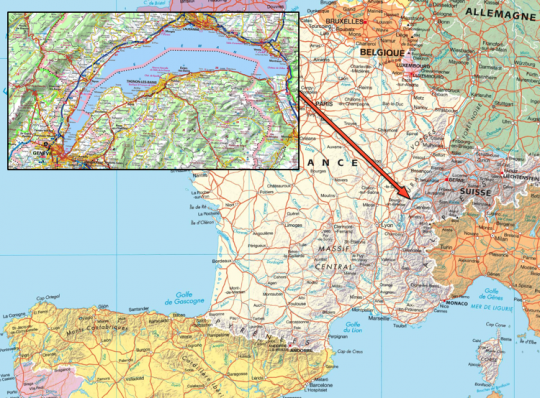
Le Léman - the Lake as the regulars say - takes its name from the Celtic language. The prefix " lem "means "big" and " an "means "water". So Léman means lake. To say that the lake represents great water would be an understatement. Crossed from east to west by the Rhône, it has the shape of a crescent, measuring at its widest point more than 72 kilometers by 13 kilometers.
In all, 6 rivers feed the lake: Rhône, Morge, Veveyse, Venoge, Versoix and Dranse. And it takes a lot of water to fill this 309-metre-deep lake. In fact, 89 billion cubic metres of water are stored in this depression created by the former Rhône glacier.
A wide range of tourist attractions
The lake offers tourists a prodigious range of activities, whichever shore they visit. Museums, escape games, water parks, castles, salt mines, dams... In all, there are 29 distinct sites where everyone, young and old, can find something to do. The entire tourist offer around the lake is orchestrated by the international organization Léman sans Frontières, which offers packages that combine visits, accommodation and transport.
International Lifesaving Society
To ensure rescue on its waters, it was necessary to create an international rescue company. This is the mission of the SISL, Société Internationale de Sauvetage du Léman. With its 21 rescue units, the society has 2,200 volunteer members at some forty stations around the lake. Active since 1885, it offers (free) rescue services to users in peril on the lake, as well as first-aid and water-safety training courses and nautical events (notably the famous Ramathon). By default, the SISL only intervenes in Swiss waters. In the event of perilous need, it remains a rescue partner for yachtsmen and yachtswomen, whatever their geographical position on the surface of Lake Geneva.
As at sea, the canal 16 is continuously monitored and emergency services ( gendarmerie, fire department... ) are active in water rescue.
A renowned playground
Wind is a major asset on Lake Geneva. Every year, no fewer than 20 different regattas are held on the lake. The best-known race on Lake Geneva, the Bol d'Or Mirabaud, is the world's largest regatta in a closed basin.
Famous sailors ply the waters of the lake. Like Bernard Stamm, who recently told us, " Lake Geneva is an excellent laboratory for boats that need to be able to make headway in light airs and no wind. A professional series that attracts many French sailors is the Décision 35, the successor to the Formule 40, which fell into disuse at the end of the 80s. "
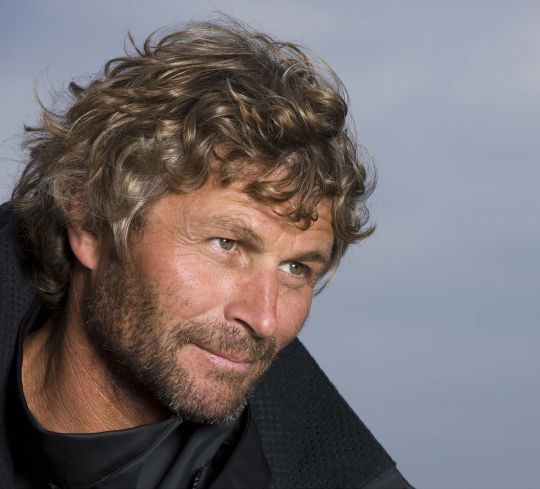
Over 70 ports
The port of Evian caught our eye among the 70 on Lake Leman. The harbour master accompanies us: " the biggest ports are in Switzerland, in Geneva and Lausanne. On the French side, Thonon, Evian and Sciez are the most important" .
Fully equipped, Evian's 800 berths provide everything yachtsmen need. " Each pitch has access to water, wifi and private sanitary facilities reserved for yachtsmen only "explains Didier Mocellin.
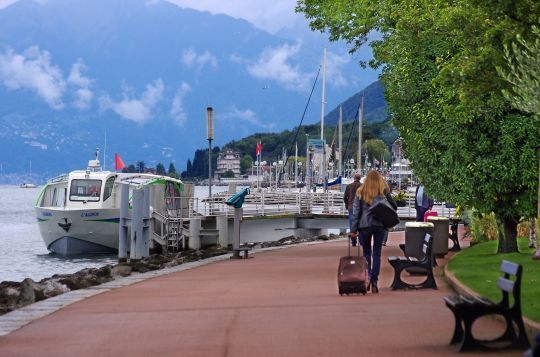
Awarded the Pavillon Bleu label, the port is located just a few hundred meters from Evian town center. " Located just 5 minutes from Evian town center, the port offers a careening area with separation of soiled water, which is regularly pumped off-site for reprocessing, thus reducing the risk of discharge into the lake to zero ".
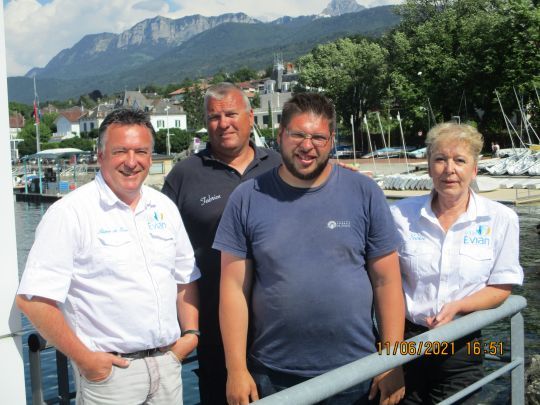
Didier describes his port as a space for user services: " Users have access to laundry facilities, bus routes and all day-to-day services. Fittings, a crane (maximum 8 tons), a boatyard and a quay where berths are available. All these services are available to both yachtsmen and professionals, including fishermen, who work in Evian all year round ".
Four people make up the Evian port workforce, working twelve months a year with " increased activity in summer, when users from all over Europe and even beyond - notably Russia - come to sail on the lake "he details, before adding " it's a bit busy sometimes in summer, but it's a very pleasant season. From October onwards, it's the fishermen who absorb our activity. Professional fishing on the lake is still very active. "
Renowned and active sailing school
A navigable body of water also implies the presence of a sailing school. Bruno de Bruyne is Director of the Evian Sailing School, and agreed to guide us around the lake. A passionate sailor, Bruno is extremely busy with the management of the school, and regrets his lack of time for sailing. He loves the lake, its atmosphere and the small, intimate spots he frequents as often as possible.
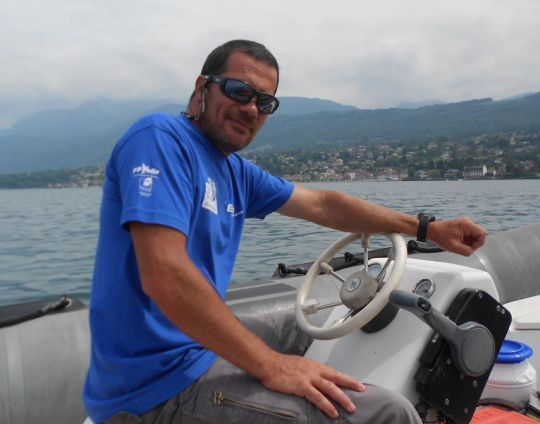
He reveals some of them: " On the Swiss side, the port du vieux Rhône, in the old course of the river. Go up the old Rhône for a kilometer or so. You arrive at a port on a small inland lake. It's restful, serene and beautiful. There are lots of mosquitoes in summer, so bring mosquito nets, but the place is truly magical "he explains. Another favourite spot for the director " The port of Saint-Prex, with its small fort, and Yvoire, an ancient fortified village ".
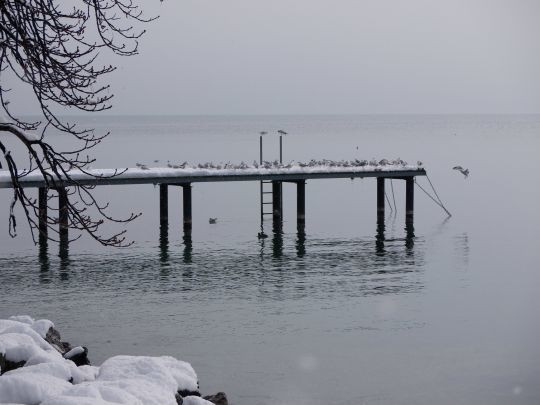
Before adding " most of the ports around the lake are urban, so it's easy to stop off for a meal or a museum visit ".
Preparing for navigation
Navigation on Lake Geneva is technical and requires rigorous preparation. Bruno explains " The lake is subject to mountain hazards. It benefits from site effects with particularly irregular winds. It's not unusual for two yachts on opposite headings to pass each other under spinnaker. It's also not unusual to come within a few hundred meters of a windless zone. For example, no wind at all at Evian and a strong gale at Bouveret. So you really need to prepare for your outing and the weather ".
In the event of dangerous gales, the banks of the lake are equipped with a system of flashing beacons, whose alerts are of an imperative nature. The manager explains: " The traffic light network is divided into 3 zones. The Petit Lac covers Geneva, the Grand Lac for Evian and the Haut Lac beyond Le Bouveret. When the beacons light up in a slow rhythm, light sailboats must leave the lake. When the rotation is fast, all non-professional boats must leave the lake ".
Precision is essential, as these alerts are of a very specific nature mandatory and the enforcement authorities don't hesitate to penalize recalcitrant boaters. Bruno explains In the event of rapid rotation, even CGN boats (which carry cross-border passengers) find it difficult to navigate safely ".
Winds and currents can be particularly violent on the lake. To decipher this phenomenon, Bruno easily illustrates the phenomenon that governs these local regimes Imagine a bathtub filled with water. Immerse your hand in the water and shake it, generating a few long waves that will die on the edge of the tub, having lost their intensity. Do the same thing, but in a bucket of water. This is exactly what happens on the lake: the waves are hard and sometimes dangerous. Once we reach heights of 2 metres, we can't get out any more. The swell is short, of the order of a metre and a half, creating enormous shear waves ".
Luckily, the tools exist to help you organize your outing. " A navigation chart is available from all the shipchandlers around the lake, as is a guide to the lake's ports, equivalent to the Breton sailor's almanac. Tip for the map: it's printed on both sides, so I recommend you make a montage so you have the whole lake in front of you in one go ".
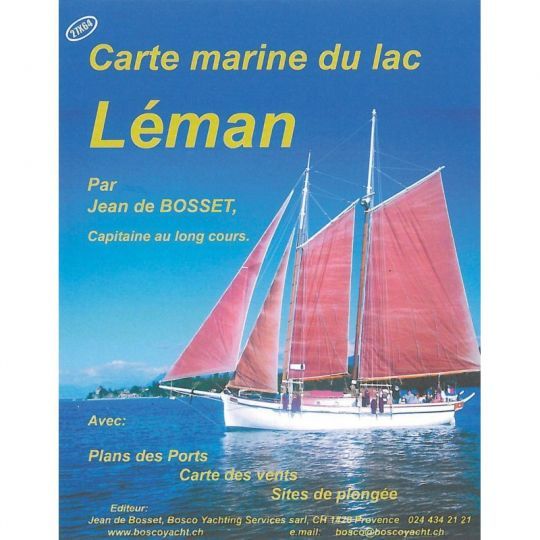
Like Windguru a meteorological application is available that provides precise local weather information: " The MeteoSwiss app allows you to observe wind, temperature and weather conditions on the lake, both now and in the future, with great geographical accuracy. I highly recommend it to all boaters on the water, as it is extremely efficient." adds Bruno.
Some specific regulations
With its RPP, the lake has a number of specific features, fortunately unified on both sides of the border There are virtually no markers on the lake "warns the manager. Hence the importance of the navigation chart. He continues: " another special feature is that a coastal license is required, including for sailboats with engines of over 9.9 fiscal horsepower. Motorboats, on the other hand, cannot be driven without a license above 6 fiscal horsepower". Namely, possession of a permit is perhaps required depending on your equipment.
As on most waterways, priority rules ( they are not privileges in this case, but real priorities ) exist for passenger boats and then for freighters. It is forbidden - and impossible given the depth of the water - to spend the night at anchor outside the buoys or ports set aside for this purpose. The explanation is simple: " At a depth of 300 metres, the mooring line would be almost a kilometer long "Bruno comments. " It's important to remember that the bottom is steep and quick to reach. For example, at Evian, 60 meters from the shore, we have 300 meters of water ".
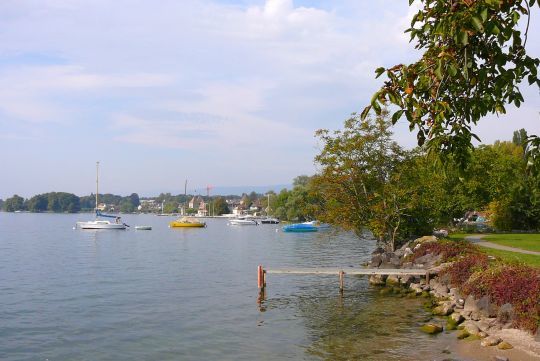
Lastly, while motorboating is possible, the practice of the jet-ski is prohibited all over the lake: " We've been through too much "says the manager.
As a safety precaution to close this section, Bruno explains: " When heading towards the Rhône (Le Bouveret towards the upper lake), be very careful of the booms set up to retain floating waste. It's easy to get stuck there, and towing is not free! "
Wide range of services
While it's virtually impossible to count the total number of berths available in the 70 in addition to the harbor structures surrounding the lake, it's good to know that most of the slipways around Lake Geneva are free of charge. As far as fuel is concerned, caution is advised by the director: " Two French ports offer fuel (Thonon and Evian). All the major Swiss ports offer fuel, but you'll need to cross the border and have your own fuel tank useful documents ".
This is all the more important as the complex navigation and currents in the lake can lead to higher fuel consumption.
Boaters wishing to spend some time on the lake will find seasonal berths for a few weeks. " They then vacate this place and can, if they wish, return to it the following year "says the head of the Evian sailing club.
Speaking of pleasure, what can you eat on Lake Geneva?" Perch fillet "Bruno reacted immediately. " We have 20 professional fishermen around the lake, so it would be a waste not to pay tribute to their work. For my part, I warmly recommend La Voile restaurant, next to the Evian club. Not only can you enjoy perch, but all the produce is local! "
